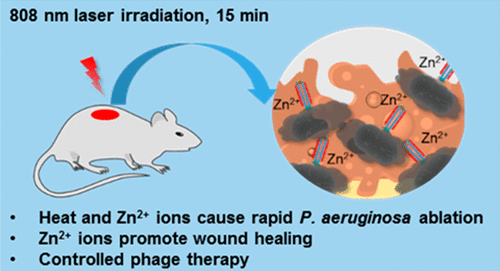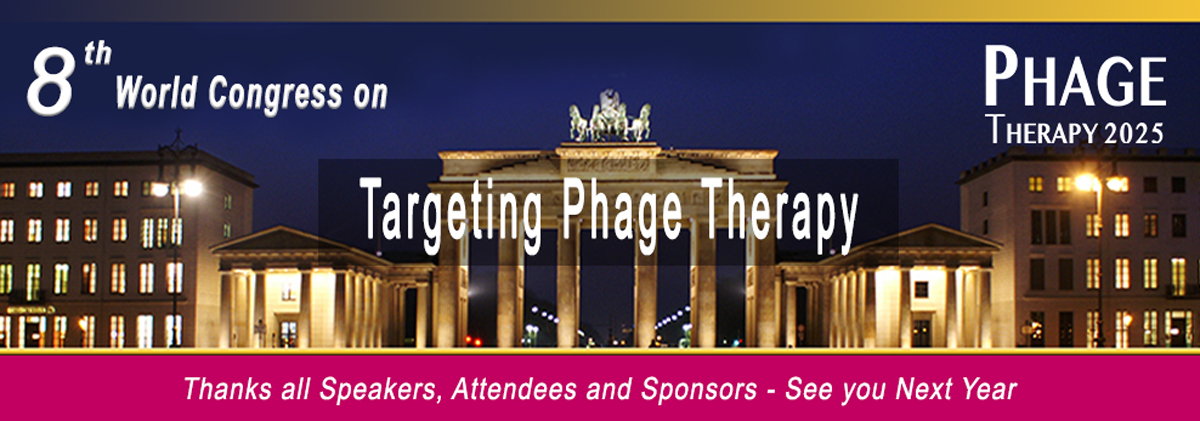
Phage therapy forms a good alternative to antibiotics, but it poses serious drawbacks and safety concerns, such as the risk of genetic transduction of antibiotic resistance genes, inconsistent pharmacokinetics, and unknown evolutionary potential. Metallic nanoparticles, in turn, possess precise, tunable properties, including efficient conversion of electronic excitation into heat.
Peng et al., demonstrated that engineered phage-nanomaterial conjugates that target the Gram-negative pathogen Pseudomonas aeruginosa are highly effective as a treatment of infected wounds in mice.
- Photothermal heating, performed as a single treatment (15 min) or as two treatments on consecutive days, rapidly reduced the bacterial load and released Zn2+ to promote wound healing.
- The phage-nanomaterial treatment was significantly more effective than systemic standard-of-care antibiotics, with a >10× greater reduction in bacterial load and ∼3× faster healing as measured by wound size reduction when compared to fluoroquinolone treatment.
- The phage-nanomaterial was also effective against a P. aeruginosa strain resistant to polymyxins, a last-line antibiotic therapy.
- The phage-nanomaterial showed no detectable toxicity or systemic effects in mice, consistent with the short duration and localized nature of phage-nanomaterial treatment.
These results demonstrate that phage therapy controlled by inorganic nanomaterials can be a safe and effective antimicrobial strategy in vivo.
Targeting Phage Therapy 2023 will introduce the latest phage technology on June 1-2, 2023 in Paris.
The scientific committee will be revising all abstract related to phage therapy in wound healing for short oral/ poster presentation. Submit an abstract.
Targeting Phage Therapy 2023
6th World Conference
June 1-2, 2023 – Paris, France
